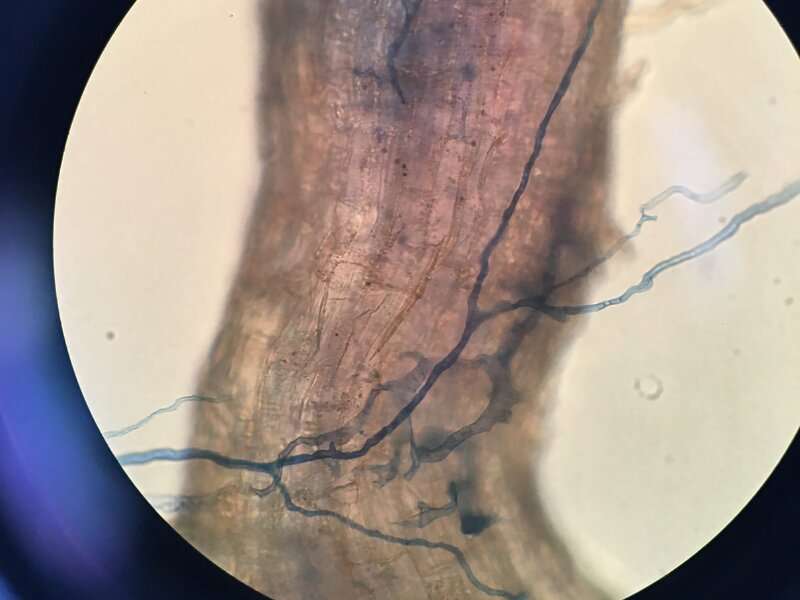Digging into soil biology recovery after petroleum contamination

Spills and leaks of petroleum products wreak havoc on the environment. They can contaminate soils and pose significant threats to humans, animals, plants, and soil microbes. Cleaning up petroleum contamination can be energy and time-consuming, however, one of the fastest methods of decontaminating soils is called thermal desorption.
"The goal of soil reclamation is to repair the disturbed landscape and ecosystem to healthy, sustainable conditions," says Zach Bartsch, lead author of the study. Bartsch is a soil scientist with Stantec in Fargo, North Dakota. "This ecosystem repair wouldn't be complete without repairing soil biology, which extends to soil microbial communities."
In a new study, researchers show that thermal desorption does not slow the recovery of soil biological components compared to other soil decontamination methods studied. This study was recently published in the Agronomy Journal, a publication of the American Society of Agronomy.
During thermal desorption, contaminated soils are excavated and heated to high temperatures. The heat vaporizes and eliminates petroleum contaminants. After becoming decontaminated by thermal desorption, the soils can then be returned to the site ready to be used again.
The study assessed how microbes recovered in contaminated soils treated by two different methods: thermal desorption and landfarming. During landfarming, contaminated soils are excavated and usually spread over a large area of land. Petroleum contaminants are allowed to dissipate or degrade naturally over time.
The study showed that microbe recovery happened similarly in soils treated by thermal desorption or landfarming. "Neither method impeded the recovery of microbial communities or abundances after four years of crop production, says Bartsch. "We show that field-scale biological recovery is possible after treating contaminated soils by thermal desorption."
"Soil microbes contribute immensely to overall soil functioning," says Bartsch. Microbes process nutrients like carbon and nitrogen. They help plants access these nutrients. They can also increase soil health.
But soil microbial activity is often reduced in disturbed or contaminated soils.

"Soil cleanup success is often based off crop yields or vegetative cover," says Bartsch. Microbial recovery may then be ignored. "We want to understand how different cleanup strategies influence microbial recovery."
Although microbes recovered equally in soils treated by either method, thermal desorption has several advantages, one being that it's a relatively fast process. "It quickens the time it takes to return soils to pre-disturbance productivity or desired land use," says Bartsch. Also, it can be used to treat a broad range of soil contaminants.
In this case, the contaminant was crude oil. The study site was in Mountrail County in northwestern North Dakota. The site had been contaminated in 2013 when a pipeline spilled 21,000 barrels of crude oil. There was a mix of contaminated and uncontaminated soils at the site. Microbial abundance was similar between the thermally desorbed and landfarmed soils, and were less abundant than the uncontaminated local soils. Fortunately, microbe levels can be greatly improved by blending the treated soils with uncontaminated soil.
"The level of recovery is likely limited by existing soil properties like soil organic matter and water holding capacity," says Bartsch. Some of these soil properties may change during thermal desorption.
To improve soil properties, the researchers blended thermally desorbed soils with local uncontaminated soil. Microbes in blended soils recovered similarly to those in uncontaminated soil. "These findings can help us better understand how to improve biological recovery in soils," says Bartsch.
The researchers also tested crop yields in contaminated and non-contaminated soils. Sorghum yields were higher in thermally desorbed soils during the study year. But Bartsch says it's unclear how much soil and environmental conditions affected sorghum yields. "This increase in crop yield may not always be the case year to year," he says.
Future research would focus on finding new methods to further improve biological recovery in thermally desorbed soils, says Bartsch. "The field is young," he says. "But there is great potential."
More information: Zachary J. Bartsch et al, Plant growth, soil properties, and microbial community four years after thermal desorption, Agronomy Journal (2022). DOI: 10.1002/agj2.21008
Journal information: Agronomy Journal
Provided by American Society of Agronomy




















